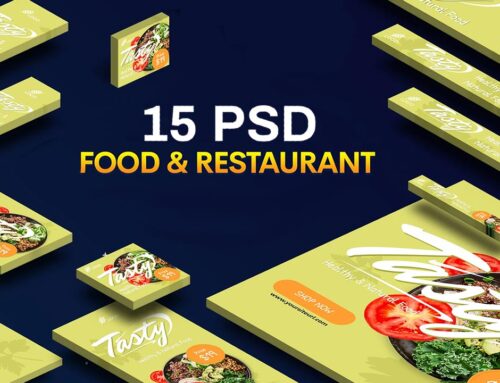As the digital landscape continues to evolve, the competition for audience attention is getting fiercer. Bloggers, digital marketers, and content creators are constantly seeking new ways to increase blog traffic and enhance online visibility. This article serves as an in-depth guide for those wanting to propel their blog traffic to new heights, utilizing proven strategies and industry insights.
Today, there are over 600 million blogs out of 1.7 billion websites globally, with more blogs emerging every day. In this highly competitive space, merely having excellent content is not enough. For a blog to thrive, it must attract and retain a significant audience. The primary objective of this article is to help you, as a blogger, achieve exactly that. You will learn about strategies used by successful bloggers and digital marketers to increase their blog traffic dramatically.
This article breaks down various methods of increasing blog traffic into easily digestible sections. It introduces you to effective techniques such as optimizing your blog for SEO, leveraging social media and email marketing, producing high-quality content, and exploring paid advertising. It also includes insider tips and tricks, industry statistics, and expert opinions to provide a comprehensive understanding of each method.
By the end of this article, you’ll have a toolbox full of effective strategies to attract more visitors to your blog, thus paving the way for enhanced brand visibility, increased revenues, and growth in your blogging career. Keep in mind that not all strategies may be applicable to your situation; it’s about finding what fits best for your blog and audience.
Table of Contents
- SEO Optimization
- Leveraging Social Media
- Harnessing the Power of Email Marketing
- Producing High-Quality, Relevant Content
- Exploring Paid Advertising
- Final Thoughts
- Sources
SEO Optimization
Search Engine Optimization (SEO) is a cornerstone of any successful blog strategy. It helps to increase the quantity and quality of traffic to your blog through organic search engine results. Let’s delve deeper into how you can leverage SEO to skyrocket your blog traffic.
Keyword Research
Keywords are fundamental to the process of SEO. These are the words or phrases that users type into search engines when looking for content. By incorporating relevant keywords into your blog posts, you can help search engines understand your content and increase its visibility.
Use tools such as Google Keyword Planner, SEMrush, or Ahrefs to find keywords relevant to your blog content. When choosing keywords, consider their search volume (how often they are used), competition (how many other sites are ranking for them), and relevance to your content.
On-Page SEO
On-page SEO refers to the practice of optimizing individual web pages on your site to rank higher in search engines and attract relevant traffic. This includes optimizing your title tags, URL, and meta descriptions, as well as using appropriate header tags (H1, H2, H3) in your content.
Include your target keywords in your title tag and URL, and make sure your meta description is enticing and includes your primary keyword. For your header tags, use them to structure your content logically and include relevant keywords where possible.
Off-Page SEO
Off-page SEO involves activities you can perform outside the boundaries of your website to improve your rankings within search engine results pages (SERPs). One of the most significant off-page SEO techniques is link building, which is the process of acquiring hyperlinks from other websites to your own.
When other reputable websites link to your blog, search engines view it as a signal that your content is high-quality and relevant, which can improve your rankings. To build links, consider strategies such as guest blogging, creating shareable infographics, and actively promoting your content on social media.
Mobile Optimization
With over half of all web traffic coming from mobile devices, it’s essential to ensure that your blog is mobile-friendly. If your site isn’t mobile-friendly, you could be losing out on a significant amount of traffic.
Site Speed
Page load speed is a critical ranking factor in Google’s algorithm. If your blog takes too long to load, not only will it negatively impact your search engine rankings, but it can also lead to a high bounce rate as users tend to leave slow-loading sites[^8^]. Use tools like Google PageSpeed Insights to test your site speed and get suggestions for improvement.
SEO is an ongoing process and requires time and consistent effort. However, the return on investment can be significant, as ranking higher in SERPs can dramatically increase your blog’s visibility and traffic.
Leveraging Social Media
Social media platforms provide a powerful channel for promoting your blog content and driving traffic to your website. As of 2023, there are over 3.96 billion people using social media worldwide, presenting a vast audience that you can tap into. Here’s how you can leverage social media effectively to increase your blog traffic.
Establishing a Presence on Relevant Platforms
With numerous social media platforms available, it’s crucial to identify where your target audience spends their time and focus your efforts there. For example, if your blog is about professional development, LinkedIn could be a valuable platform. On the other hand, a food blog might find a more receptive audience on visually oriented platforms like Instagram or Pinterest.
Sharing High-Quality Content
Social media platforms are content-driven. Sharing high-quality, engaging content can boost your visibility, engagement rates, and ultimately drive more traffic to your blog. This could be a compelling quote, an interesting statistic, or a high-quality image or video. Make sure the content you share aligns with your brand and is likely to resonate with your target audience.
Engaging with Your Audience
Social media is not just about broadcasting content; it’s a two-way communication channel. Engage with your audience by responding to comments, asking questions, and participating in discussions. This can help you build relationships with your audience, improve your online reputation, and increase your blog traffic.
Utilizing Social Media Advertising
Social media platforms offer sophisticated advertising options that allow you to target specific demographics, locations, and even interests. This can be a powerful way to reach your ideal audience and drive more traffic to your blog. Platforms like Facebook and LinkedIn provide detailed analytics, enabling you to measure the success of your ads and adjust your strategy accordingly.
Promoting Your Blog Content
Don’t be shy about promoting your blog content on social media. Share links to your latest posts, as well as popular or relevant older posts. To increase engagement, include an intriguing summary or a compelling quote from the post to pique interest and encourage clicks.
By leveraging social media effectively, you can significantly increase the reach of your blog content and attract more traffic to your website. It’s essential to be consistent, genuine, and engaging to maximize the potential of social media platforms.
Harnessing the Power of Email Marketing
Email marketing remains one of the most effective methods for driving traffic to your blog. In fact, the ROI for email marketing can be as high as 4400%. By building an engaged email list and sending consistent, relevant content to your subscribers, you can encourage repeat visits to your blog and establish a loyal readership. Let’s explore the ways you can harness the power of email marketing.
Building an Email List
The first step in harnessing the power of email marketing is to build an email list. Consider adding a subscription form on your blog where visitors can sign up to receive your emails. You can entice visitors to subscribe by offering a free resource (like an ebook or a webinar), a discount, or exclusive access to content.
Crafting Engaging Newsletters
Newsletters can be a powerful tool for driving traffic to your blog. They can include updates, useful information, exclusive content, or links to your latest blog posts. Ensure your newsletters are engaging, valuable, and reflect your brand’s voice and style.
Personalization and Segmentation
Email marketing allows for high levels of personalization and segmentation, making your communication more relevant to the recipient. You can personalize your emails based on the recipient’s name, interests, or past behavior on your blog. Similarly, you can segment your email list based on various factors such as location, engagement level, or topic interest to provide more targeted content.
Using Automation Tools
Email marketing automation tools can help you streamline your email marketing efforts. You can schedule your emails to be sent at optimal times, automate your responses based on user behavior, and even create email sequences that nurture your subscribers over time.
Monitoring and Optimizing
It’s important to monitor the performance of your email campaigns regularly. Look at metrics like open rate, click-through rate (CTR), and conversion rate to gauge how your emails are performing. Based on these insights, you can continually optimize your email marketing strategy to improve engagement and increase traffic to your blog.
By effectively harnessing the power of email marketing, you can not only drive more traffic to your blog but also cultivate a loyal and engaged readership.
Producing High-Quality, Relevant Content
In the digital world, content is king. Creating high-quality, relevant content is arguably the most effective strategy for increasing your blog traffic. In fact, companies that blog consistently have been shown to acquire 434% more indexed pages on average, which greatly enhances their visibility in search engines. Below, we’ll discuss various elements of producing content that attracts and retains a robust readership.
Understanding Your Audience
Before you start creating content, it’s vital to understand who your audience is and what they’re interested in. Tools like Google Analytics can provide valuable insights into your audience demographics and behavior. Additionally, conducting surveys or inviting feedback can help you understand your readers’ needs and interests, enabling you to produce content that resonates with them.
Focusing on Quality
High-quality content is original, well-researched, and provides value to the reader. It’s not just about producing content that attracts visitors, but also about retaining them and encouraging them to return. Ensure your content is well-written, visually appealing, and free of errors. It should provide solutions, insights, or valuable information that meets the needs and interests of your readers.
Creating SEO-Friendly Content
While focusing on quality, it’s also essential to make your content SEO-friendly. As discussed earlier, use relevant keywords, structure your content with header tags, and create engaging meta descriptions. But remember, while SEO can help attract traffic, it’s the quality of your content that will keep readers coming back.
Diversifying Your Content
Diversifying your content not only keeps your blog interesting, but it can also attract a broader audience. Consider varying your content format – articles, videos, infographics, podcasts, and case studies all appeal to different types of readers. Additionally, cover different but related topics within your niche to cater to varied interests.
Consistency is Key
Consistently publishing new content can significantly boost your blog traffic. It gives readers a reason to return to your blog regularly and helps to establish your reputation as a reliable source of information. Develop a content schedule that works for you and stick to it.
In summary, producing high-quality, relevant content is a critical strategy for increasing your blog traffic. While it requires time and effort, the benefits in terms of increased visibility, enhanced reader engagement, and higher blog traffic make it a worthwhile investment.
Exploring Paid Advertising
Paid advertising is a direct and potentially rapid method of driving traffic to your blog. While organic strategies like SEO and content marketing are crucial for long-term growth, paid advertising can give your blog a quick boost and help you reach a broader audience more swiftly. Below, we’ll delve into the various forms of paid advertising and how they can enhance your blog traffic.
Pay-Per-Click (PPC) Advertising
Pay-Per-Click (PPC) advertising is a model where you pay a fee each time one of your ads is clicked. One of the most popular forms of PPC is search engine advertising, such as Google Ads. You bid for ad placement in a search engine’s sponsored links for keywords related to your blog. When a user performs a search query with your chosen keywords, your ad may appear at the top of the search results, driving relevant traffic to your blog.
Social Media Advertising
As discussed earlier, social media platforms offer powerful advertising options. Facebook Ads, Instagram Ads, LinkedIn Ads, and Twitter Ads are just a few examples. These platforms provide sophisticated targeting options, allowing you to reach your ideal audience based on demographics, interests, behaviors, and more.
Display Advertising
Display ads are a form of paid advertising that you can place on various websites, apps, or social media platforms through ad networks like Google Display Network. These ads can take various forms, including banners, landing pages (LPs), and pop-ups. They are excellent for raising brand awareness and re-engaging users who have visited your blog.
Influencer Marketing
Influencer marketing is another form of paid advertising where you collaborate with influencers in your niche to promote your blog. This can take the form of sponsored posts, product reviews, giveaways, or guest blogging. Since influencers already have an engaged audience that trusts their recommendations, this can be a highly effective way to drive traffic to your blog.
Sponsored Content
Sponsored content is a form of advertising where you pay to have your content featured on another website or platform. This can include articles, videos, infographics, or any other type of content that provides value to the audience of the platform where it is published.
When exploring paid advertising, it’s crucial to monitor the performance of your ads and continually optimize them for better results. It’s also essential to ensure that your blog is prepared to convert the incoming traffic into loyal readers or customers.
Final Thoughts
In an era of unprecedented digital growth, standing out in the blogging world is challenging. Yet, with the right tools and techniques, it’s possible to dramatically increase your blog traffic. To recap, optimize your blog for SEO, leverage social media platforms, harness the power of email marketing, produce high-quality content consistently, and explore the potentials of paid advertising. Keep in mind that while some strategies might yield immediate results, others are more about building a strong foundation for long-term growth.
In essence, increasing blog traffic is a combination of consistent effort, strategic planning, and the ability to adapt to changing trends and audience behaviors. By understanding and applying the strategies highlighted in this article, you will be better positioned to drive significant traffic to your blog and achieve your blogging objectives.








